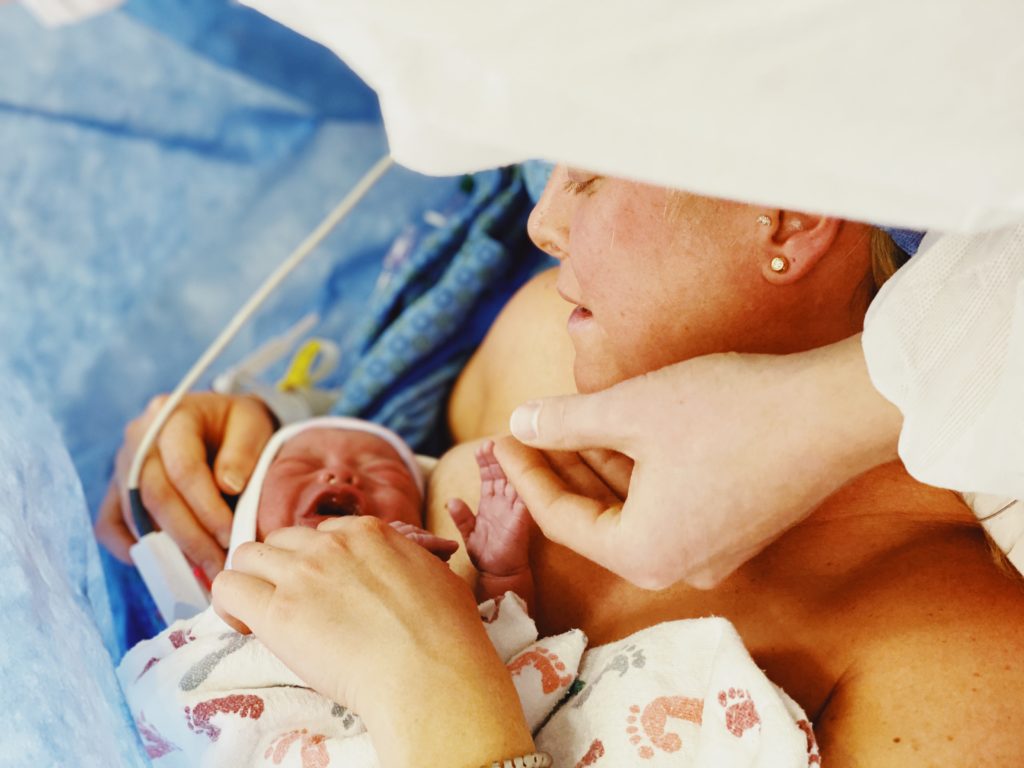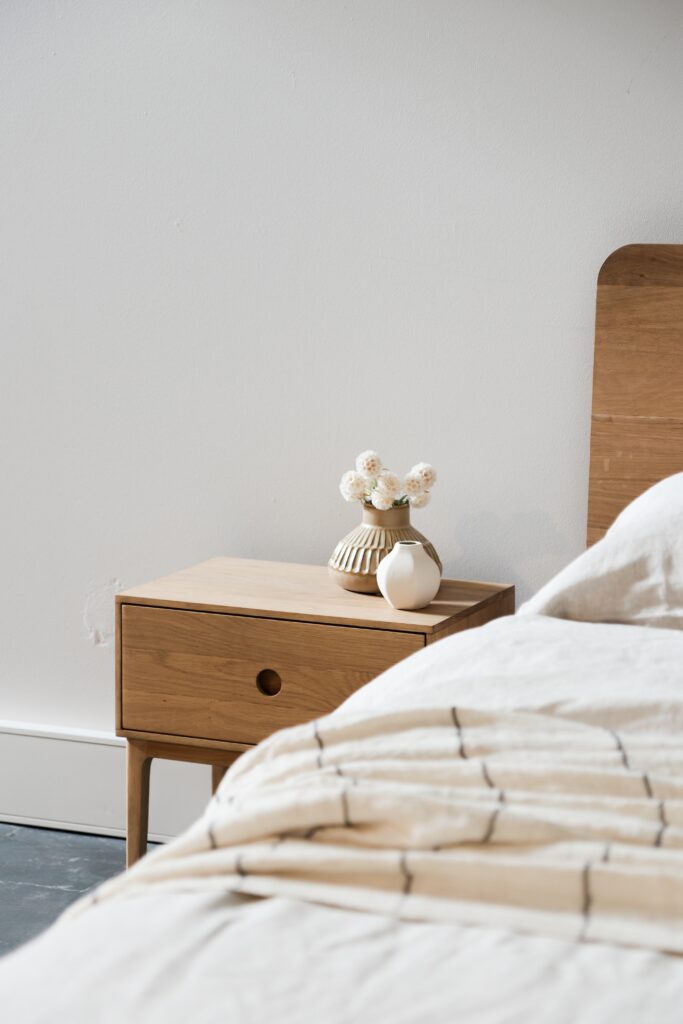Postpartum is an opportunity for growth, learning, and rebirth. While it’s an emotionally vulnerable time, it’s also a potent opportunity to trust your intuition and get comfortable in your power.
As with both pregnancy and birth, postpartum is different for every mother. If you’ve recently given birth (congratulations!), your body is experiencing a lot. Hormonal fluctuations, sleep deprivation, mood swings, and more. On top of feeling physically tender—particularly if you gave birth via C-section—you’re likely feeling everything from overwhelmed to teary and emotional. All of these things are normal. That said, knowledge is power. Be it your first or fourth baby, you should know what’s happening in your body and why. Without further ado, let’s dive into how your hormones change after birth, and most importantly, ways to support postpartum hormone balance.

What happens to your hormones after Giving birth?
During pregnancy, estrogen and progesterone significantly increase. However, once the placenta is removed after birth, these two hormones take a sharp (but intentional!) dip. In essence, estrogen and progesterone must drop for breastfeeding hormones—like prolactin and oxytocin—to do their job. Simultaneously, oxytocin surges to stimulate uterine contractions and promote bonding between yourself and your newborn. That said, this dramatic shift often contributes to significant emotional swings.
Mood fluctuations are Normal
During labor, endorphins rise. They peak immediately after delivery and decline during postpartum. These high endorphin levels help women cope with the process of birth, aid in alertness, and even provide euphoric feelings after birth. However, like estrogen and progesterone, they fall in the first few postpartum days. Once they do, it’s very common (read: normal) for mood fluctuations to develop. To the degree you feel comfortable, communicate your emotions to your partner and loved ones. You’re not in this alone!
If you’re feeling emotionless, sad, scared, and empty after giving birth, you’re not alone. If you’ve felt this way for more than a couple of weeks or months, contact your healthcare provider to make a sustainable action plan.

The baby blues
Unsurprisingly, these hormonal fluctuations have an impact on emotional stability. The so-called “baby-blues”—where women can feel weepy, tearful, and overwhelmed—typically last for a few days (or up to 1-2 weeks). However, they can last significantly longer. If that’s the case, or they’re accompanied by anxiety, despair, or are preventing you from being able to complete daily tasks, it is important to seek evaluation for postpartum depression.
Postpartum Phyiscal changes
Before we dive into postpartum hormone balance, let’s talk about postpartum physical changes. Low estrogen levels—which stay low until you re-start your menstrual cycle, may last throughout the duration of breastfeeding. And low estrogen can contribute to postpartum hot flashes, pelvic floor dysfunction, vaginal dryness and low libido. Hair loss (known as telogen effluvium) is another common postpartum symptom. It’s usually triggered 1-5 months after delivery. However, normal hair patterns are typically restored by 6-15 months after delivery. See here for postpartum hair loss nutrition tips!

What are signs of postpartum hormonal imbalance?
Postpartum hormonal imbalance symptoms run the gamut. They can include anxiety and depression, low libido, weight gain, cysts or fibroids, and chronic fatigue. That said, what determines whether or you’ll experience these symptoms? Ultimately, many different factors—such as baseline constitution of your health pre-pregnancy, gut microbiome, delivery method, breastfeeding, stress levels, diet and lifestyle, thyroid health, and genetics contribute to hormone health. If the symptoms you experience become severe and persist 3-6 months after you stop breastfeeding, reach out to your doctor.
Do you have PCOS? If so, you may need extra support to balance your postpartum hormones—let’s work together! Don’t underestimate the power of proper nutrition, sleep, leaning on your support team, and gentle forms of exercise.

4 Steps to postpartum hormone balance
Without further ado, below are ways to lessen the effects of postpartum hormonal fluctuations. Here’s where to start:
1. proper Nutrition
First and foremost, breastfeeding moms need anywhere from 250-500 extra calories (daily) to produce adequate breast milk. With that in mind, weight loss shouldn’t be a goal for the first 3-6 months after giving birth. With patience, balanced blood sugar, and moderate exercise, weight loss will come—naturally!—over time. Ultimately, focus on a diet that’s rich in high-quality protein (wild-caught fish, grass-fed beef, pastured eggs, cottage cheese), healthy fats, fresh produce, as well as nuts and seeds. Try to avoid high sugar and ultra-processed foods and instead focus on whole, mostly unprocessed foods: leafy greens, bone broth, avocados, and ghee.
See here for the best foods to eat after giving birth. There’s no need to cut out entire food groups or count calories. Rather, it’s about the quality of your food over the quantity. Using supplements can be very helpful too.

2. Sleep
Sleep is crucial for everyone—pregnant, postpartum, or not! It’s especially important for balancing hormones and healing the body. But for obvious reasons, it’s the most challenging to prioritize. Nap when you can and enlist childcare support from friends, family members, or childcare providers. These tips for getting better sleep may help, too. It’s important to remember that sleep deprivation (and chronic stress) during the postpartum period can lead to sugar cravings, additional weight gain, and inflammation.

3. Lean on your support team
Trust me: your village wants to help you. If there’s ever a time to call in your support system, it’s right after you’ve given birth. Whether it’s talking to other new moms, joining a postpartum or breastfeeding support group, or sharing your postpartum journey with family members, it’s important to normalize postpartum highs and lows. Along with counseling, many women find that working with a postpartum doula to be very beneficial for speeding up their recovery time. In the very least, lean on friends and family members to help you with basic house chores, light cooking, etc. You’re not expected to do it all—especially in the early postpartum months. The more stress you can minimize, the easier it will be for your hormones to re-balance.

4. movement
Once you’re cleared to exercise, moving your body is extremely beneficial for your mental and physical well-being. Exercise helps with natural detoxification, blood sugar balance (which can help stabilize hormones), provides a boost in endorphins, helps strengthen your core after giving birth, and so much more. Whether it’s pilates, strength training, cycling, or walking, aim for consistency over rigorous, tough workouts. The point is to enjoy moving your body and ease back into a movement routine.

postpartum book recommendations
While it can be difficult to navigate postpartum hormonal fluctuations, they’re temporary! Wishing you the best of luck and I’m here to support you on your postpartum journey.
best Postpartum books
Your Baby Your Way by Jennifer Margulis. Nourishing Traditions For Baby and Child Care by Sally Fallon. Postpartum: The Expectations & Reality of the Fourth Trimester by Mrs. Jessica Maree Dawson. The Honest Guide on Postpartum for New Moms by Alicia Filippone. Your Best Body After Baby by Jen Torborg. Safe Infant Sleep by James Makenna.

This article contains affiliate links. Thank you for supporting Wellness with Edie. This article is for informational purposes only. It is not, nor is it intended to be, a substitute for professional medical advice, diagnosis, or treatment and we recommend that you always consult with your healthcare provider.



Leave a Reply